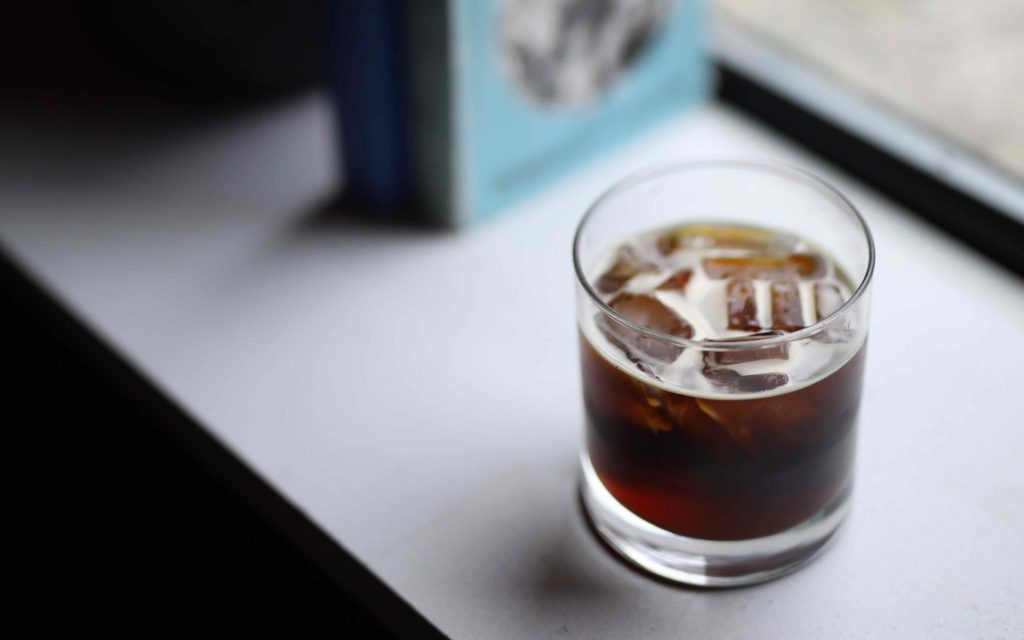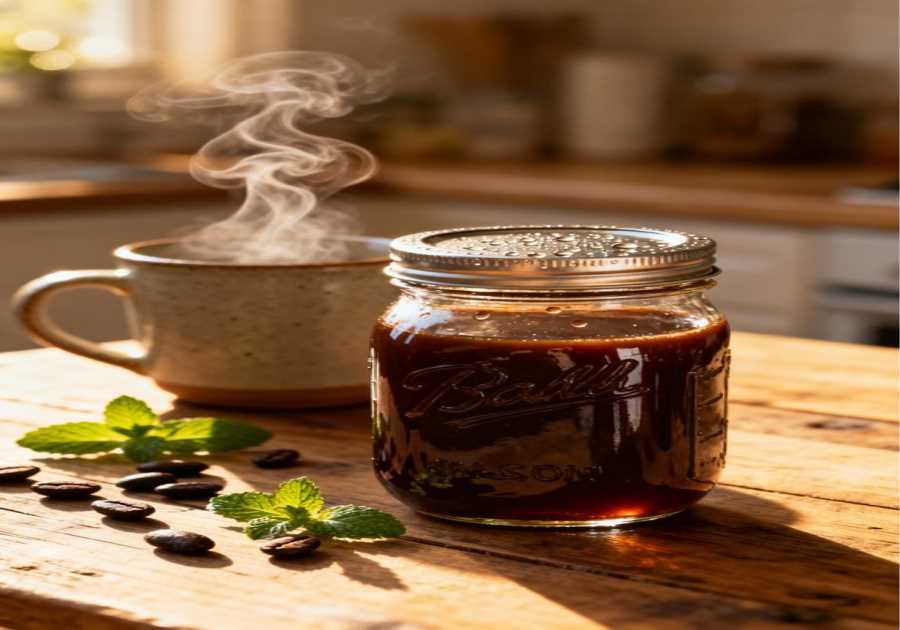Cold brew is one of the most popular drinks in coffee shops around the world. According to research firm Technavio, the value of the global cold brew market will increase by almost US $440 million by 2027.
In line with growing consumer demand for more diverse cold brew products, interest in cold brew extraction and how this method affects flavour is also increasing.
One example of this is a 2022 study, which explores how brew temperature influences flavours in full immersion coffee brewing, including cold brew. The research – conducted in partnership with the Specialty Coffee Association’s Coffee Science Foundation, Toddy, and University of California Davis (UC Davis) – found that “cold brew is more floral, and less bitter, sour, and rubbery than hot brew.”
This research paper leads to a lot of questions. Arguably, however, the most important one is whether or not these findings could have an impact on brewing methods – especially in coffee shops.
To find out, I spoke with Dr. Mackenzie Batali and Randy Anderson. Read on to find out more about the practical implications of this research.
You may also like our article on how coffee shops can make cold brew more profitable.

Why is cold brew so popular?
Before we look into the study on brew temperature and sensory profiles, we first need to understand why cold brew is so popular.
During the 1600s, Japanese sailors would often prepare cold coffee drinks on ships. This would help to mitigate any fire hazards when brewing hot coffee.
However, the recent explosion in cold brew consumption we’ve seen has meant cold brew is now apparently the third most popular way of preparing coffee in the US – after drip coffee and single-serve options.
So why is cold brew so popular, especially among younger demographics? There are many reasons, but one of the most prominent is that cold brew often has sweeter, smoother, and less acidic flavours than hot brewed coffee. This generally makes it more appealing to millennials and Gen Z consumers, who opt for healthier beverage alternatives.
Furthermore, ready-to-drink cold brew – such as canned and bottled products – are convenient options for younger consumers. These demographics typically have busier lifestyles, but still want to drink high-quality coffee.
During warmer months, meanwhile, cold brew is particularly popular. This is largely because consumption of hot brewed coffee tends to decline during these periods in line with higher temperatures.

Breaking down new coffee research
In November 2022, the SCA published an article detailing the results of its Cold Brew Extraction research project.
The study found four sensory attributes which varied significantly in relation to brew temperature. These were “bitter taste”, “sour taste”, “rubber flavour”, and “floral flavour”. The levels of the first three attributes were all higher in hot brewed coffee, while the level of floral flavours was higher in cold brew coffee.
However, researchers also noted that there were several additional sensory attributes for specific origins and roast profiles which were significantly affected by brew temperature, too. These included fruity, woody, and smoky flavour notes.
Dr. Mackenzie Batali has a PhD in Food Science and Technology at UC Davis and is a Food Scientist at Minus Coffee. They led a team of researchers on the study, and explained to me how it was carried out.
They used three coffees to represent three different origins and processing methods:
- Honey processed Bourbon, Pacamara, Sarchimor, Pacas, Catuai, and Caturra varieties from El Salvador
- Washed organic indigenous heirloom varieties from Guji, Ethiopia
- Wet hulled Fairtrade-certified organic Catimor, Tim Tim, and Abyssinia varieties from Takengon, Sumatra
Each coffee was roasted to three different roast profiles (light, medium, and dark). All coffees were left to degas for one week. Following this, they were then placed in vacuum-sealed bags in a freezer at -20°C (-4°F) and removed one day prior to extraction. They were all brewed at three different temperatures: 4°C, 22°C, and 92°C (39.2°F, 71.6°F, and 197.6°F)
Researchers used Toddy Cupping Kits and Toddy paper filters to prepare all coffees at all three temperatures. The three coffees were brewed at a ratio of 100g of coffee to 500g of purified water. The total dissolved solids (TDS) measurement was 53 parts per million (or ppm).
Understanding the results
As mentioned earlier, the study found that between different brew temperatures, there were significant differences in four key sensory attributes across all three origins and roast profiles.
For instance, regardless of roast profile, the washed Ethiopian coffee tasted significantly “more burnt” at 92°C than at lower temperatures. However, when brewed at 4°C, the Ethiopian coffee had more fruity flavours.
“All the evidence we found in our research indicates that brewing variables are important and will make a difference, but that roast profile and origin will always have more impact on flavour profile,” Mackenzie says.
“It was encouraging to see results which supported our hypothesis that different roast profiles and origins are affected differently by brew temperature,” they add. “Specifically with the Ethiopian coffee, colder brew temperatures highlighted more of the floral and fruity flavours.”
One result that was particularly interesting was the link between pH level and perceived flavours in cold brew.
“Based on the sensory data, people perceived the coffee brewed at 4°C as less sour,” Mackenzie says. “However, we weren’t seeing the same results reflected in terms of pH level.”
In line with this, Mackenzie says they are working on further research to potentially explain these conflicting findings.
“We would need to conduct a full chemical analysis, but it depends on which acids are present in cold brewed coffee,” they tell me. “Citric acid, malic acid, and acetic acid are more sour tasting, however, there are other acids like chlorogenic acids that are chemically acidic, but don’t taste as sour.
“It can also depend on the presence of bitter compounds,” they add.

Practical applications for coffee shops
In short, the SCA’s research found that it is easier to perceive fruity and floral flavours at colder temperatures. Overall, data analysis showed that lighter roasts were more floral, fruity, and sour tasting. Darker roasts, meanwhile, were more burnt and bitter tasting.
Origin also played a key role in sensory profile. For example, the honey processed Salvadoran and washed Ethiopian coffees were generally more sour and fruitier than the wet-hulled Sumatran coffee. The latter had more vegetal and nutty flavours. However, many of the differences dictated by origin were also dependent on roast profile and brew temperature.
Ultimately, when it comes to sensory profile, the study shows that a coffee’s attributes are very much linked. Although origin, roast profile, and brew temperature all have their own impact on a coffee’s flavours, the effects are more pronounced when we consider them collectively.
So, what does this mean for specialty coffee shops who serve cold brew?
First and foremost, we already know that lighter roast profiles typically have more fruity and floral flavour notes. If coffee shops are looking to prepare cold brew with these kinds of flavours, they can simply use lighter roasts to achieve this.
However, there are also more real life implications for coffee shops to consider when it comes to preparing coffee at colder brew temperatures. The most important is knowing how to avoid any serious issues.
Health & safety guidelines with colder brew temperatures
Randy Anderson is a consultant who has nearly a decade of experience working with cold brew.
He explains that his first priority when working with new commercial clients is to ensure they follow health and safety regulations when preparing and serving cold brew.
“Some coffee businesses aren’t even aware that there are food safety regulations for cold brew,” he says. “Maybe they’re not sterilising equipment, keeping samples coded, or have proper recall plans in place.
“You’re essentially preparing a low acid food product. So if you’re not following formal regulations, there can be serious consequences,” he adds.
Randy emphasises that according to US Food and Drug Administration regulations, commercial businesses cannot leave a food and beverage product above 5°C (41°F) for more than two hours. It should be noted that cold brewed coffee was extracted at 4°C in the study. This is in accordance with FDA regulations.
“Essentially, coffee shops and roasters need to let cold brew steep in refrigerators,” he says.
Mackenzie agrees, saying: “Coffee shops, of course, have to take food safety into consideration.
“One of the challenges of academic research is that you need to control conditions as much as possible in order to pass peer review,” they continue. As a result, research doesn’t always reflect the real life conditions in coffee shops – something which coffee business owners need to keep in mind.

Research like this certainly provides more insight into how brewing variables affect coffee flavour – namely brew temperature, origin, and roast profile.
However, at the same time, it’s clear that further studies are also necessary if we are to understand more about what causes these different variables to result in certain sensory attributes. In turn, it could then be possible for coffee shops and brands to add more value to their products.
Enjoyed this? Then read our article on choosing a coffee for cold brew.
Perfect Daily Grind
Want to read more articles like this? Sign up for our newsletter!
The post Why does cold brew taste different to other coffee brewing methods? appeared first on Perfect Daily Grind.
By: Jackson BoothTitle: Why does cold brew taste different to other coffee brewing methods?
Sourced From: perfectdailygrind.com/2023/04/why-does-cold-brew-taste-different/
Published Date: Wed, 26 Apr 2023 05:32:00 +0000






